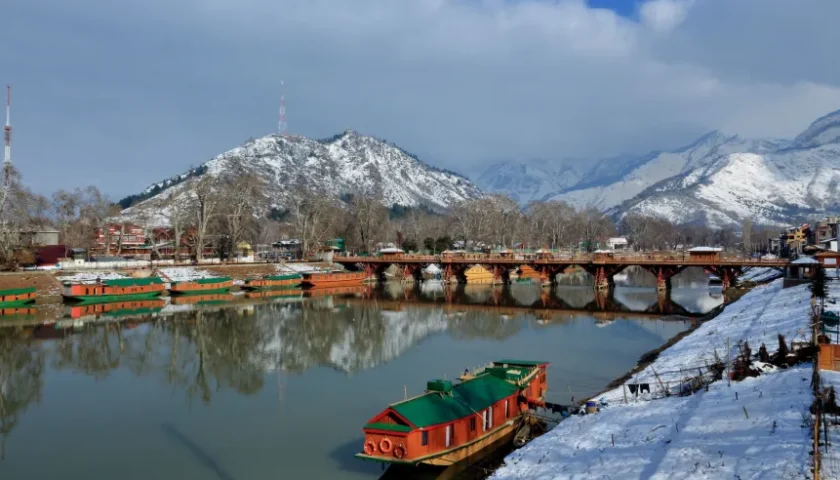Kashmir witnessed the driest January in a decade with nearly 90 per cent deficiency in precipitation. It has also risked the survival of the region’s water bodies.
The Indian Meteorological Department listed the state as having “largely deficient” rain and snowfall this month, which otherwise, receives an average of 95.7-mm rainfall.
During the month, the state received 3.2-mm rain and snowfall against the normal average of 65.3 mm for that period – resulting in 95 per cent deficiency, the IMD said in its report. Moreover, the state’s nine districts received no rainfall while 11 districts received largely deficient rainfall during this period, the department said.
The last week of the month did witness feeble precipitation, which has not been tabulated yet. The downpour, however, was too insignificant and isolated to make any drastic change in the existing pattern.
According to the data maintained by the Srinagar Meteorological Centre, the summer capital received a total rainfall of 1.2 mm this month. The city recorded an average of 49.6-mm rainfall in January and the precipitation was lowest for this month in the past decade.
Gulmarg, a famed skiing resort in north Kashmir which serves as the backbone of the region’s tourism industry during winter, recorded an abysmal 16.8-mm precipitation, which was almost 90-per cent short of its month’s average of 158.8 mm and a dismissive figure compared to January last year’s 383.4 mm. It was also the lowest January precipitation at the resort in the past decade.
The state-wide dismal precipitation this month has beaten the previous lowest for January, as it fell short of the 27.9-mm rainfall received in January 2015 across the state, and also coincided with erratic temperatures as days were warmer and nights were colder.
January is the coldest month in Kashmir and also the core period of winter. However, the day temperature this month remained five to six degrees higher than the average and registered a high of 14.2°C on January 21 in Srinagar against the average maximum temperature of 6.3°C.
Meanwhile, the rain and snow deficiency also risks the region’s water bodies, including the Jhelum, which is flowing at record-low levels for the past several months.
Jhelum’s water level has remained below zero point in south Kashmir, where its source is based, since October last year when it had dropped to -0.65 feet, the lowest in its recorded history.
The lack of precipitation during the winter’s core period, when glaciers are formed in mountainous upper reaches and provide a steady supply to rivers and streams during summer, will have a negative impact on the region’s agriculture and horticulture sectors and also limit the drinking water supply.
90% Dip in precipitation, January 2018 decade’s driest period




